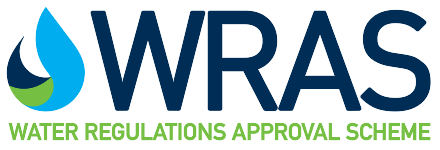Hi. Today my kitchen mixer tap broke (head snapped off the cartridge). Pic of the tap:

From a quick Google, it's an obscure cartridge so I'm better replacing the tap. However, I have an old heating system with a Baxi back boiler and a cold tank in the loft and hot water in upstairs airing cupboard. According to a post I made last year (https://www.diynot.com/diy/threads/replacing-old-designs-of-taps-with-new.612100/ - thanks @Madrab and others) I need a dual flow mixer tap to avoid backflow (I'm not too concerned about output pressure; the dishwasher does the washing up and I wash my hands in the bathroom, so it's mostly just for cold water). However, between Screwfix, Wickes and Toolstation it's almost impossible to find a kitchen mixer tap labelled as dual flow. I found and bought https://www.wickes.co.uk/Wickes-Toba-Monobloc-Kitchen-Sink-Mixer-Tap---Chrome/p/180982 : "Dual flow tube spout", "Suitable for both high- and low-pressure water systems" and min pressure of 0.2 bar, which sounds good. It also has the design I wanted (separate hot and cold levers):

However, I opened it, unscrewed the aerator and looked in. I can't see any separate channels, and I was able to push a piece of cardboard through about half of the way (the length of the cardboard, which was the diameter of the spout, ish). Does this mean the tap is unsuitable and was mislabelled in three places? And if so, are there any actual options for a dual-flow tap these days from somewhere like Wickes, TS or SF? I found https://www.magnettrade.co.uk/products/axiom-dual-flow-tap-chrome/ but doesn't look like they sell to DIYers.
And on installation, the current setup is:

To remove the current tap, I just undo the nuts on that bolt using https://www.wickes.co.uk/Rothenberger-Monobloc-Tap-Spanner-Set/p/118702 right? And the spiral clamp thing will just come off? And then for the water inlets, it is all in rigid copper now, no flexi hoses. It looks like the pipe is tapered from 15mm to M8(?) using something like https://www.showerspares.com/search/bristan-15mm-copper-pipe-and-m8-adaptor-pair-sk420013/ - so should I use this tapered copper pipe, or should I cut it once it gets to full 15mm (above or below where the 15mm-to-m8 is currently soldered, just below where the picture ends?) Will I need a double check valve? My current plan was to use the flexible tails it comes with, along with https://www.toolstation.com/flat-faced-male-straight-isolating-valve/p95064 to have an isolator too, but it would be cleaner to have just one piece - something like https://www.wickes.co.uk/Primaflow-...onnector---15-X-12-X-300mm-Pack-Of-2/p/160136 to connect the 15mm copper to the tap directly, but I can't find one of those with an isolator valve. Although if I need a double check valve I'll need to change plan again, and maybe skip the isolator, as there's not too much room under the sink.
Would really appreciate any help please!
From a quick Google, it's an obscure cartridge so I'm better replacing the tap. However, I have an old heating system with a Baxi back boiler and a cold tank in the loft and hot water in upstairs airing cupboard. According to a post I made last year (https://www.diynot.com/diy/threads/replacing-old-designs-of-taps-with-new.612100/ - thanks @Madrab and others) I need a dual flow mixer tap to avoid backflow (I'm not too concerned about output pressure; the dishwasher does the washing up and I wash my hands in the bathroom, so it's mostly just for cold water). However, between Screwfix, Wickes and Toolstation it's almost impossible to find a kitchen mixer tap labelled as dual flow. I found and bought https://www.wickes.co.uk/Wickes-Toba-Monobloc-Kitchen-Sink-Mixer-Tap---Chrome/p/180982 : "Dual flow tube spout", "Suitable for both high- and low-pressure water systems" and min pressure of 0.2 bar, which sounds good. It also has the design I wanted (separate hot and cold levers):
However, I opened it, unscrewed the aerator and looked in. I can't see any separate channels, and I was able to push a piece of cardboard through about half of the way (the length of the cardboard, which was the diameter of the spout, ish). Does this mean the tap is unsuitable and was mislabelled in three places? And if so, are there any actual options for a dual-flow tap these days from somewhere like Wickes, TS or SF? I found https://www.magnettrade.co.uk/products/axiom-dual-flow-tap-chrome/ but doesn't look like they sell to DIYers.
And on installation, the current setup is:
To remove the current tap, I just undo the nuts on that bolt using https://www.wickes.co.uk/Rothenberger-Monobloc-Tap-Spanner-Set/p/118702 right? And the spiral clamp thing will just come off? And then for the water inlets, it is all in rigid copper now, no flexi hoses. It looks like the pipe is tapered from 15mm to M8(?) using something like https://www.showerspares.com/search/bristan-15mm-copper-pipe-and-m8-adaptor-pair-sk420013/ - so should I use this tapered copper pipe, or should I cut it once it gets to full 15mm (above or below where the 15mm-to-m8 is currently soldered, just below where the picture ends?) Will I need a double check valve? My current plan was to use the flexible tails it comes with, along with https://www.toolstation.com/flat-faced-male-straight-isolating-valve/p95064 to have an isolator too, but it would be cleaner to have just one piece - something like https://www.wickes.co.uk/Primaflow-...onnector---15-X-12-X-300mm-Pack-Of-2/p/160136 to connect the 15mm copper to the tap directly, but I can't find one of those with an isolator valve. Although if I need a double check valve I'll need to change plan again, and maybe skip the isolator, as there's not too much room under the sink.
Would really appreciate any help please!


